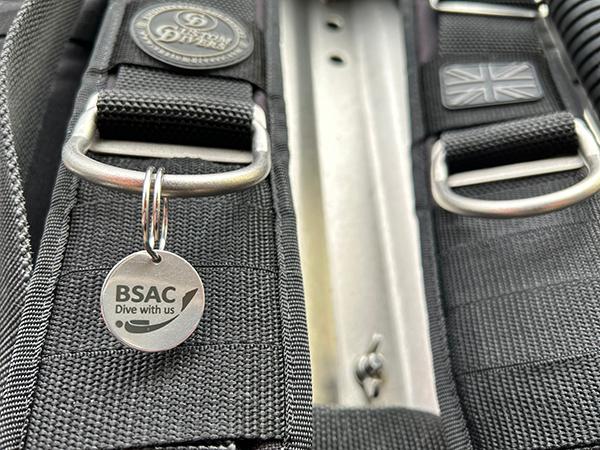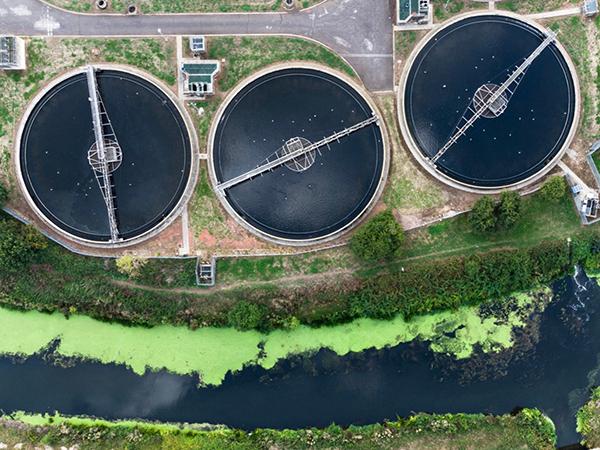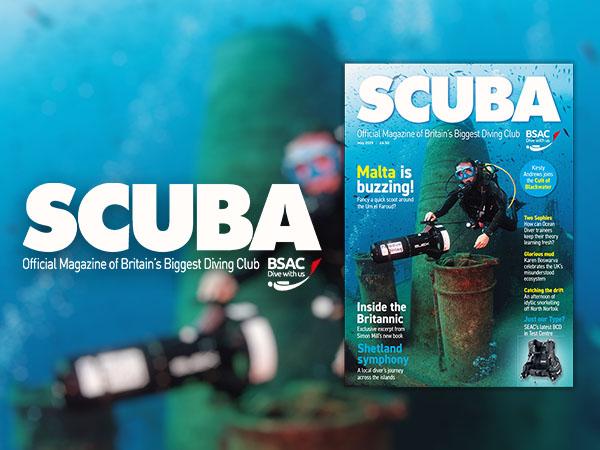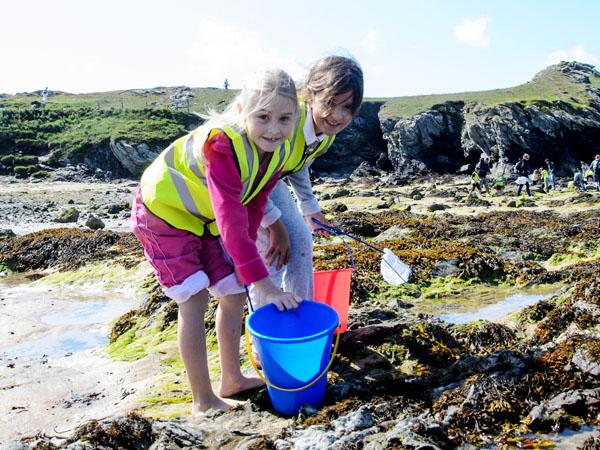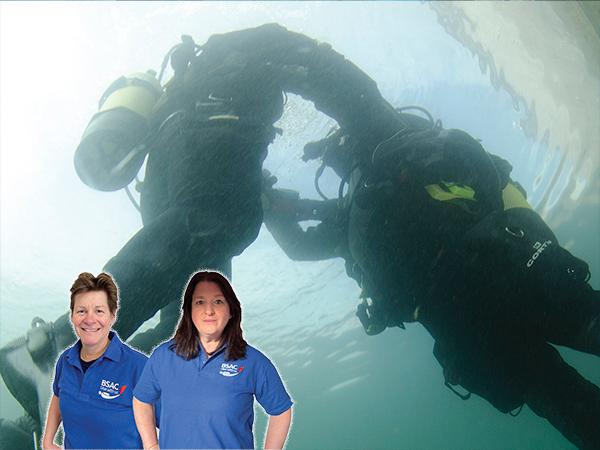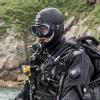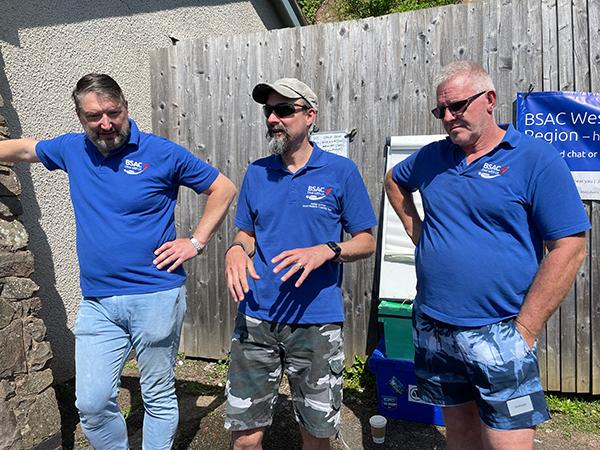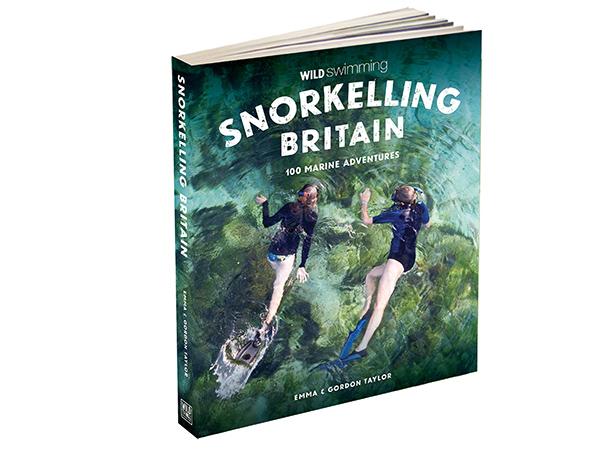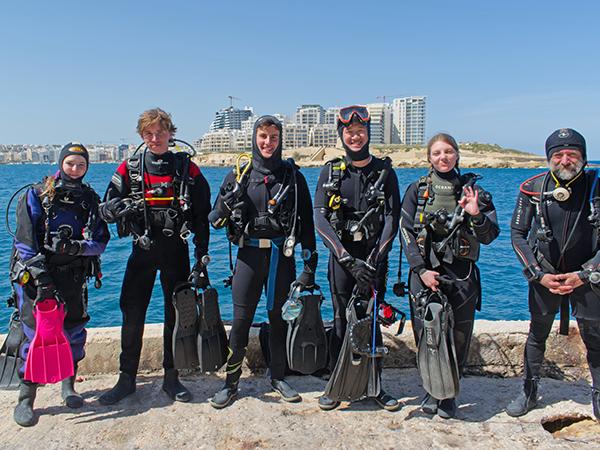The UK has more than 11,000 miles of coastline to explore, with plenty of dive sites that show off the rich diversity of nature that call the seas around the UK their home.
Here are some of our favourites from around the UK and ROI.
Farne Islands, Northumberland
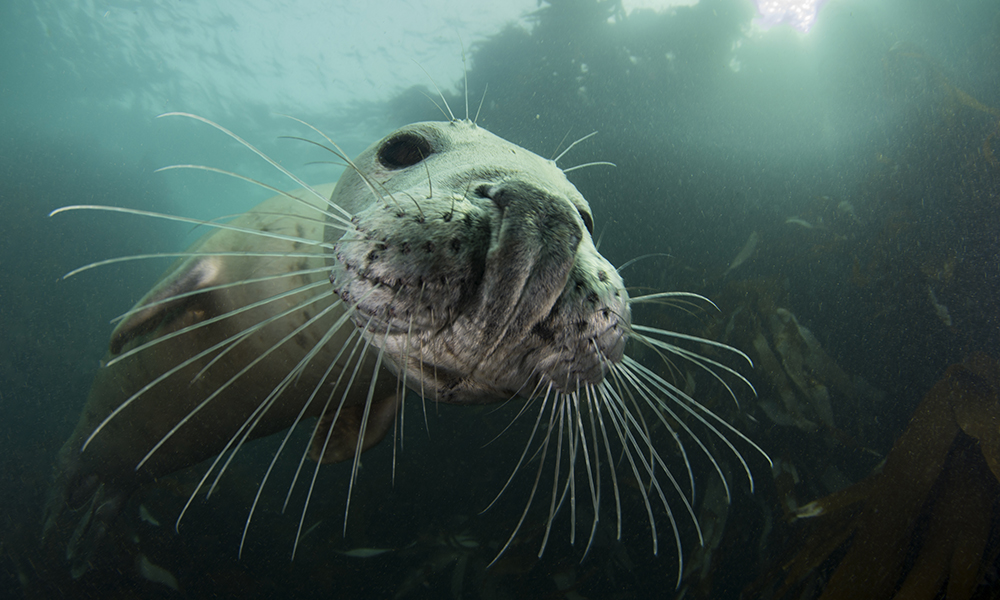
Seals are curious creatures that nibble your fins before twirling away. You turn around and the seal is back. Hanging effortlessly in the water. Staring you in the face. Its huge limpid jet black eyes innocently saying “who me?” before darting effortlessly and impishly off into the kelp forest.
Scapa Flow, Orkney Islands
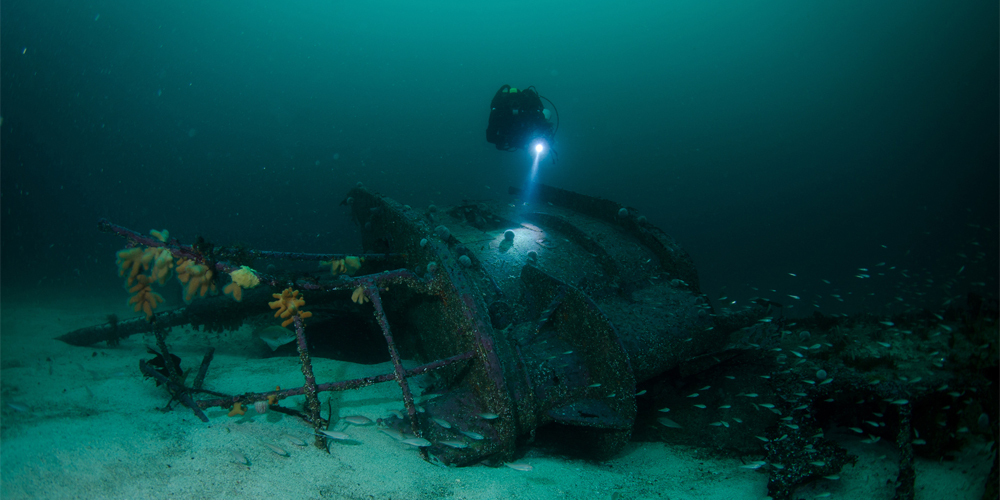
This historic maritime haven is hugely atmospheric both above and below the sea. Shafts of sunlight pierce the emerald green water, giving the impression that you're diving a liquid stained glass window.
The result? It helps make exploring the vast battleships and smaller blockships a compelling, poignant experience and an enthralling, impressive dive.
Malin Head, County Donegal
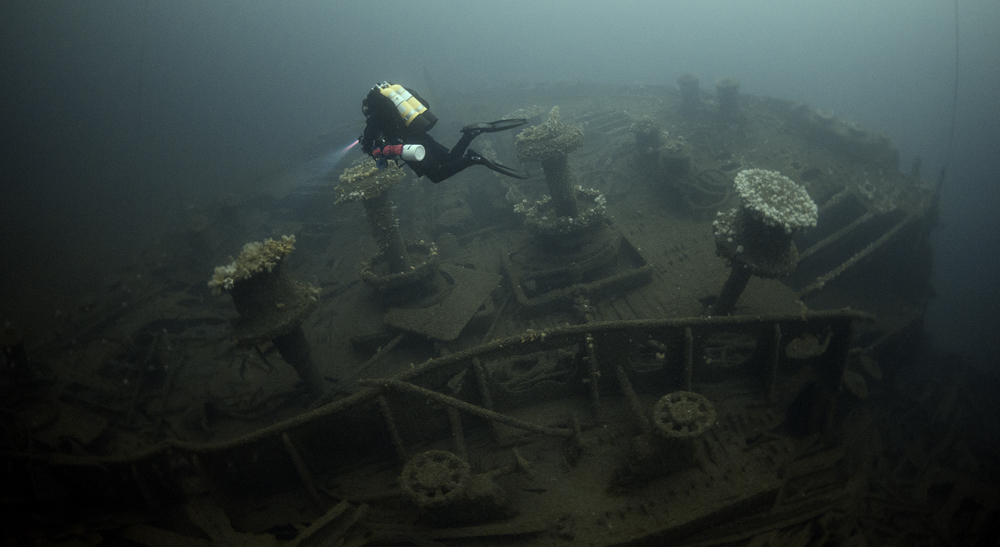
Today, Malin Head is renowned for its remarkable visibility and deep, historically significant, super-sized shipwrecks. It is the place to explore immense ocean liners, 116 U-boats and American Sherman tanks.
Wrecks include HMS Audacious – the first battleship to be sunk in WWI - and RMS Justicia, a former troopship that was once reassigned to the White Star Line shipping company.
Swanage Pier, Dorset
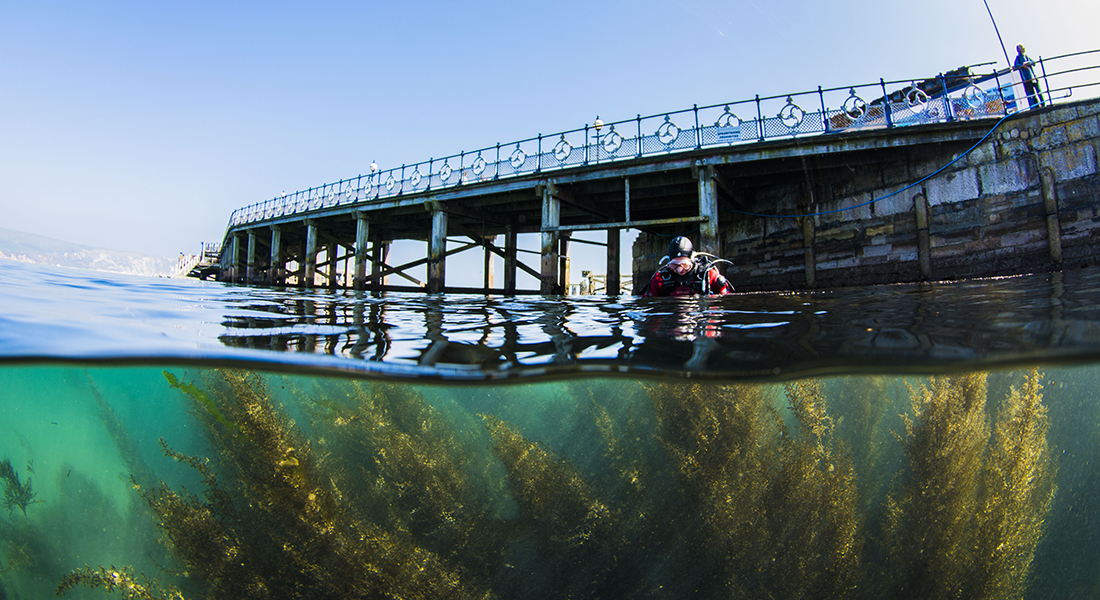
Swanage Pier is home to the oldest UK diving school. It is a favourite “first sea dive” for new divers, and a handy “shake-down dive” site for experienced divers, looking to check their weighting and equipment, before embarking on something more adventurous.
Piers are fascinating places to dive as there are plenty of curious creatures which take shelter in the shadows. Forests of swaying sea lettuce and kelp are natural nurseries for fish such as Bib, Ballan wrasse and Pollock, as well as crustaceans such as the feisty, red-eyed velvet crabs.
Submarine Arch, St Kilda
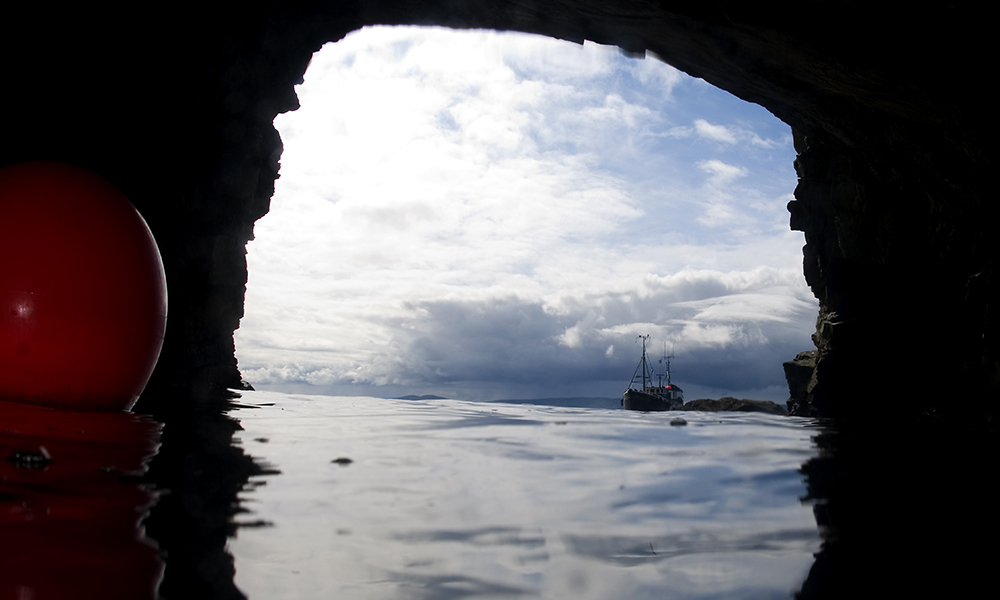
Rock walls are resplendently bejewelled with every kind of voluptuous anemone you can think of. Large patches of sumptuous frilly forget-me-not blue jewel anemones - that turn bluey purple when you light them with a torch - are interspersed with purse sponges, Devonshire cup corals and sea urchins. There is not a spare patch of stone to be seen. It is difficult to know where to look next in this psychedelic garden.
The Drinking Dragon / Burroo Rock, Isle of Man
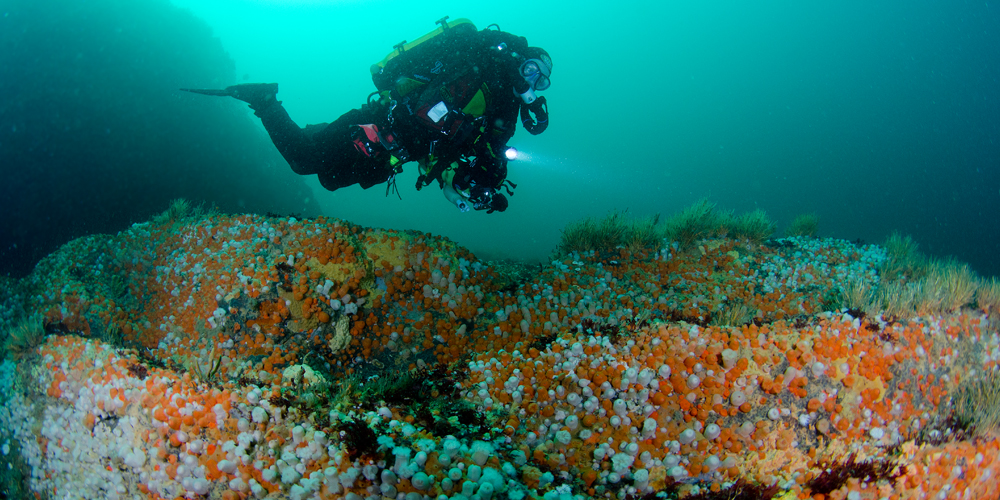
Burro is exceptional because of its bewitching gullies and diverse marine life. It's as though someone has planted rocks with furry white-polystyrene mini Henry Moore sculptures. The resulting crop of dead man's finger soft corals blanket this site.
Competition for space is fierce. Elegant snakelocks and large giant daises - Dahlia anemones - smatter the stones aplenty. Glimpse in a gap and you're sure to spot an edible crab or, better yet, come face-to-face with a Grey Seal.
The Scilly Isles, Cornwall
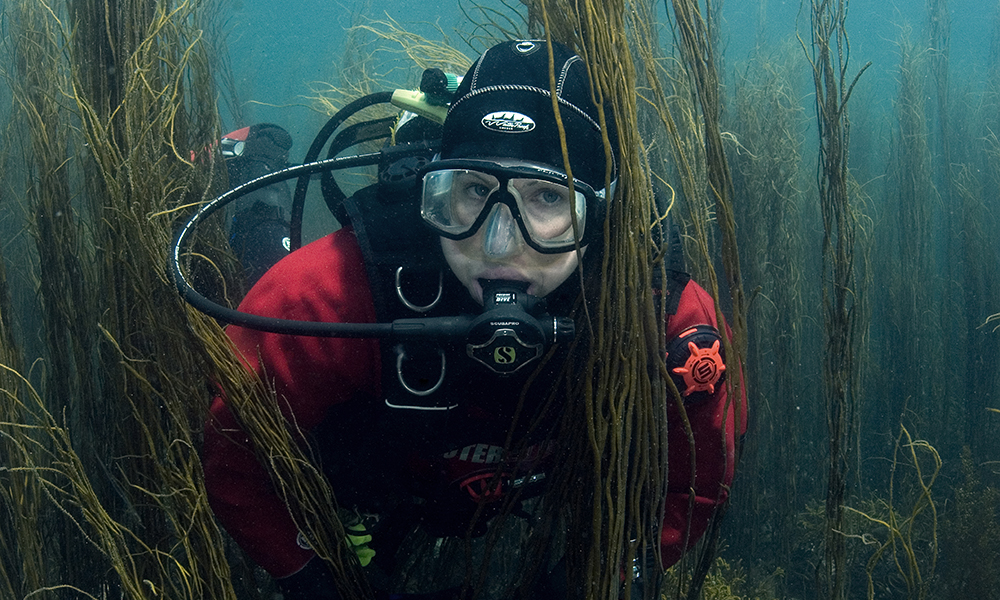
These isles were often the last sight of England and, in the fog, the first thing sailors felt on their return. No wonder these islands are peppered with wrecks - ancient and modern – and this is the place to see more than one wreck on a dive.

